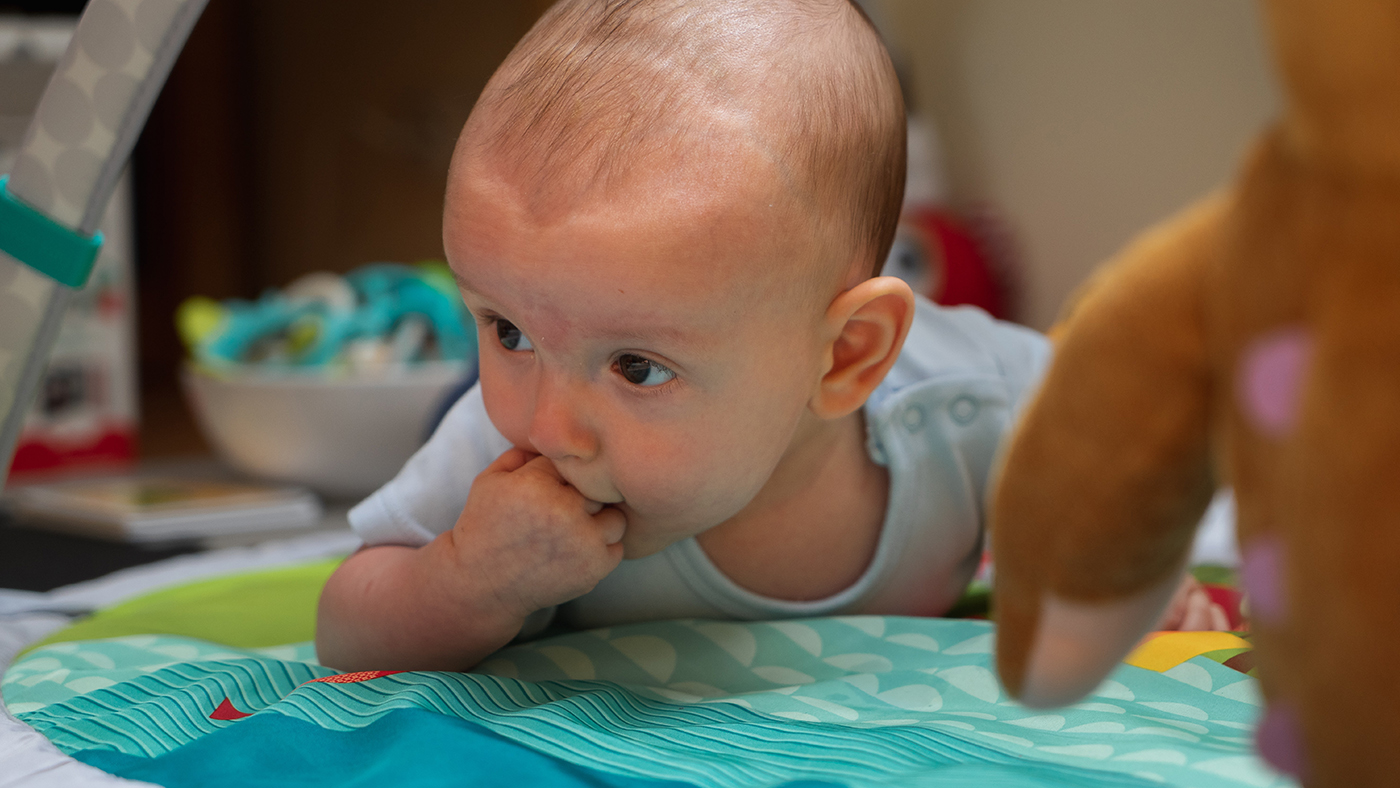I can't see it... but I know it's there

Your baby will have become more interested in things as their vision has developed and they can see more clearly. They also will have started to reach for and touch objects, and as they do this will become more interested in exploring!
Now, your baby will be able to show their awareness of objects by reaching for something even when they can only see part of it.
Object permanence and Piaget's theory
Object permanence is the understanding that an object or person still exists even when you cannot see it/them; as adults, we know that when someone goes out they still exist and are doing things even when they're not visible.
Piaget suggested that babies under the age of around 12 months did not know that people and objects continued to exist when they could not see them; he believed that this was a concept babies develop over time.[1]
More recent research suggests different
However, more recently, researchers have demonstrated that even young babies can demonstrate an understanding of object permanence, suggesting that babies might have more awareness of objects than had been thought in the past.
While it is thought that babies know something exists when they cannot see it, they might not have the memory to remember this if an object is hidden for longer. So, the understanding that an object exists might be present for some time before your baby has the memory to demonstrate this understanding.[2]
Knowledge from birth or experience and interaction?
There is a continuing debate among psychologists about how much understanding of objects and their properties babies have from birth, and how much they develop through their experience and interaction with objects. When object permanence develops is part of this debate, as it links to babies developing an understanding of objects and an ability to make a mental representation of an object, so the ability to think about an object and its properties.[3]
When your baby looks for an object that is partially hidden, they are showing that they understand what the object looks like, so they know that part of it is hidden. Your baby is demonstrating the first step towards understanding that an object that they cannot see or hear still exists.
Their senses combine to understand objects
Your baby will learn to understand objects by using information from their senses; as they hold, move, put objects in their mouth and look at objects they will develop their understanding of the properties of the objects that they explore.
Your baby’s brain makes links between the areas that process information from different senses as they explore an object and this gives them different information about the world.[4] All of this exploration helps your baby to build mental representations of objects, so they know when only part of something is visible.
Memory will help them to locate things
Your baby will spend lots of time exploring objects and learning more about their properties. They will look for objects that they drop and will begin to look for ones that are hidden. As their memory develops, your baby will remember where objects are kept when in familiar places and go to look for a toy or object themselves.
References:
[1] Addyman, C (2020) The laughing baby: The extraordinary science behind what makes babies happy. London: Unbound.
[2] Streri A, de Hevia M, Izard V, Coubart A. 2013. What do we Know about Neonatal Cognition? Behavioral Sciences. 2013; 3: 154–169.
[3] Bremner, J.G, Slater, A.M, Johnson, S.P. (2015) ‘Perception of object persistence: The origins of object permanence in infancy.’ Child Development Perspectives. 9(1) pp7-12.
[4] Smith, L., Gasser, M. (2005) ‘The development of embodied cognition: six lessons from babies.’ Artificial life. 11 pp 12-29.